How do tigers get trained… how on earth do you train an animal that is entirely capable of killing you? And what can we dog owners learn from this?
- Tigers Need Trust
- Tigers Need To Be Taught
- Tigers Need Enrichment
- Management Techniques Are Really Required For Tigers!
- This Is All Known As Positive Reinforcement Based Training
- Your Puppy & Trust
- Your Puppy & Teaching
- Your Puppy & Enrichment
- Your Puppy & Management
- The Old Way Of Dog Training Your Puppy
- The Change Of Training Approach In Zoos
- So, Train Your Puppy Like A Tiger!
- Need help?
- Train your Puppy like a Tiger with Rebarkable Pupdates!
- About Ali Smith
- About Zara
- About Peter Giljam.
Okay, so, any of you who know me, know I’m a bit of a geek with my specialist subject (cue mastermind music). So, I’ve been watching The Zoo, on Discovery+ – and I’m genuinely loving watching it. It’s enlightening to see modern care for zoo animals. It’s awesome to see them focusing on the animals wellbeing, from their red pandas, to their tigers.
Zoo care has really evolved from what I imagined it was when I was younger.
But, specifically, I was watching Season 4 episode 3 with Taryn Teegan working with one of their tigers, Olden, where she ran him through a short training routine including down, paw, up, over and ‘target’ which was basically what I teach as Touch to my dogs.
I loved watching this and it made me think of you! Yes you, and your puppy and how to train them like a tiger, like the zoo keepers train their tigers! Because, ultimately? That tiger deserves respect in order to ‘handle’ them. They require respect – I’d even say they demand it. They’re far more powerful than us measly humans, so to work with them successfully, what would you need to do?

I’ve enlisted a couple of experts (sadly not from the Bronx Zoo) but from other zoos across the world, who have given comment on this and the modern training that goes on there. They’re participating so that you and I can to understand and learn about what goes on behind the scenes – and most importantly why these techniques are so crucial.
These are Peter Giljam from Zoospenseful – a consultant who helps zoos create awesome, considerate programmes and Zara Jackson, a former zoo trainer, who is now applying her learned expertise with positive reinforcement to dogs! Both have more full bios at the bottom of the post!
Tigers Need Trust
Trust is gained by repeated positive experiences. Something that fights a tiger’s very nature. The zoo keepers have a lot bigger problem (quite literally!) than we puppy parents do! In this instance, so what do they do? They take it slow, they bond with them when they’re young and build a continued pattern of positivity – with one or all of the below as part of that exchange.
This is what our experts had to say!
“ With tigers but really any zoo animal there are various ways what we do. I mean we aren’t constantly with these animals but we do observe them and interact with them. Everything is based on positive interactions. We don’t say “No” we don’t tell the animal off. Every experience is positive. It is important to have time with your animals. But even more important that the time is filled with great connections. “ – Peter Giljam
“ in the programmes were two male african lions. To begin with one of the lions was terrified of me and would not approach me for training. You can not enter the lions enclosure and make it out alive, so all participation in training sessions is completely on the lions terms. I had to build some trust with Lenny before he would take food from me and begin training. We developed an incredible relationship through patience and training without correction. “ – Zara Jackson

Tigers Need To Be Taught
For tigers this is a whistles, chicken and meatballs it seems – gifted with forceps. You don’t need need forceps, luckily!
The Tigers of the Bronx Zoo are regularly trained! They go through cycles of things like paw, roll over, up, over and down – which is a pretty impressive repertoire – but the thing I loved to see? Was that the tigers recalling from across the exhibit. I mean… I know dog owners (not my Rebarkable Puppies, by the way, they’re acing it) who can’t manage a solid recall! And yet these tigers – not a domesticated animal – are managing solid calls across their enclosures.
Uh – remarkable or what?! (Remeowkable? Hmm… maybe not 🤣)
This is what our experts had to say about their experiences of teaching Tigers (and Lions… but they count, shh!).
“ We [Lenny the lion & Zara] developed an incredible relationship through patience and training without correction. Lenny was trained to open his mouth on cue so that I could check his teeth” – Zara Jackson
“ This kind of connects to the one above [Trust]. We want to find the right behaviour directly and reinforce accordingly. We only focus on what we want to see and everything else is ignored. This also means that we change the environment positively to elicit the behaviour we are looking for and reinforce accordingly. “ – Peter Giljam

Tigers Need Enrichment
Enrichment is a really important aspect of a tiger’s wellbeing – and your pups! Adding in challenges can be a fantastic way to keep an animal stimulated. You can encourage their problem solving nature, you can engage their prey drive, you can get them using muscles that they may not regularly – all of which makes the brain work, makes the animal work harder in order to complete the task at hand. In itself? This tends to make the animal feel more fulfilled – I like to think of it like when you get a good day at work, and you are super productive and that is damned rewarding.
This is what Peter had to say about enrichment for Tigers.
“ Especially in the zoo enrichment is a science on its own. We apply enrichment to take out the best natural behaviour as possible. We look at the physiological side of it as well because it has to be healthy. Enrichment is focused on proactive behaviour management. This helps us not to get separation anxiety, distress for other reasons and make their environment fun and safe to be in. That’s our main goal. “ – Peter Giljam
Management Techniques Are Really Required For Tigers!
You’ll notice in their handling of these animals, the keepers keep themselves safe first. This is the priority. All demonstrations are done behind a chainlink fence, as is any training, or veterinary procedure until the cat is definitely knocked out. This hands off approach means that whatever the tiger is doing for the humans? They’re two things
- Rarely stressed
- Able to leave
These two factors, along with keeping the handlers safe, are something we dog people can really learn from!
This is what Peter & Zara had to say about how management was deployed in their zoos.
“ All big cat training was done protected contact through the fence so the animal could walk away at any point. The animals had a choice. Had we tried to dominate the lions or force them the animals would have left or at worst attacked you through the fence.“ Zara
“ Managing tigers is difficult because they are somewhat dangerous. We train them in protective contact which means there is always a barrier in between us and the animals. We build an environment where the animal feels same and where we are successful in the training of the tigers. We only use ethical ways to train the animals.
“This means that we do not train with punishment practices.
“From the start when a baby is born and start to interact with it’s environment we try to build relationships based on mutual respect.
“I mean when they grow up, try to control a tiger. It’s impossible!
“So we train the animals with operant conditioning with the emphasis on positive reinforcement and there is one specific thing that stands out for us continuously and that is that everything we do should be a welfare benefit for the animals. “ – Peter
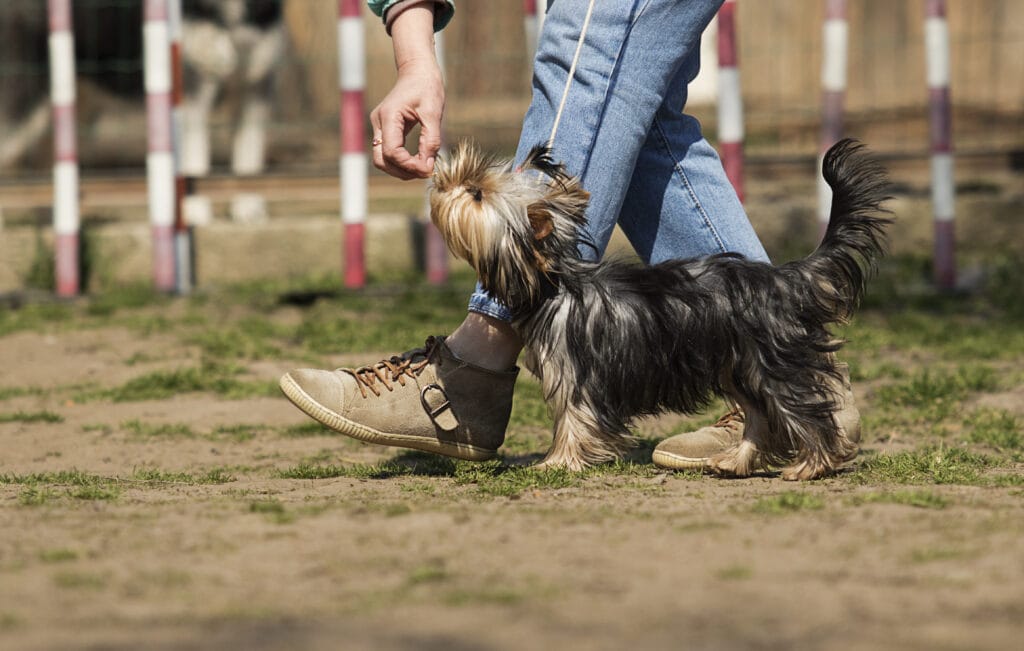
This Is All Known As Positive Reinforcement Based Training
All of this aligned with what I teach and how I teach it for puppies. It requires patience, but it gets the most reliable results. This is (scientifically speaking) the most reliable way to teach any animal anything – whether that’s us humans, Tigers, Lions or puppies.
With all of this? Zoo keepers keep tigers, lions and all manner of other animals as happy as possible in a zoo environment, where conservation efforts can thrive. They’re respected, they do all of these things through choice and desire to do so. Isn’t that admirable?
If it works for a tiger, this can entirely work for your puppy too. The four keys above, Trust, Teach, Enrich & Manage, are four things that are the exact same in principle as what you do with your puppy.
Let’s look at these aspects from our Tiger & Lion experts and what they can mean for your puppy.
Your Puppy & Trust
This is always the place to start. Humans mean good things, humans always are there to be a pleasant experience to your dog – and that starts with you. You need to be that strong, wonderful puppy parent, the patient and understanding one who can understand their puppy’s emotions and needs as best as possible.
From veterinary to nutrition, training and everything inside of that.
Your puppy, and your future dog need to be able to trust you, they need to be able to unwind – the same as you do.
“It is important to have time with your animals. But even more important that the time is filled with great connections”
PETER GILJAM
I love this. This is really important to consider when raising your puppy. You want every experience to be positive. You want to walk away from them, and them from you going “Yay!” not “Phew” or “Yuck…” it’s hard, but consistency will pay off. You want to feel as close to your dog as you can, and know and understand them. This is where trust makes such a big difference in your bond.

Your Puppy & Teaching
Training your puppy is such a big part of this. I mean – I know you know this because you’re still here and a trained puppy will provide years of joy and love – this is how both puppies and dogs thrive.
This not only helps to create a dog that will work with you, but a dog that understands how they function as a part of your family and part of the wider world. Puppies are not born knowing how to be a part of a human family, this isn’t something that’s programmed in their DNA – but it is something you can teach, and something your puppy deserves to be taught so you can both enjoy each other!
These things include where to go to the bathroom, mouth manners, appropriate greetings of people amongst many, many other things. All stuff we can teach you and your puppy.
So don’t skimp! Make sure they’re trained, and give them that time – they deserve it and you deserve an awesome dog.
Your Puppy & Enrichment
“Enrichment is focused on proactive behaviour management.”
PETER GILJAM
I LOVE THIS. I need to write that in caps because this is one of the best descriptions I’ve ever heard for enrichment. It’s typically a little bit of a fluffy definition – but I feel this describes it perfectly and why it should be done.
Enrichment is about harnessing a behaviour with a constructive outlet. A permissible outlet. So stopping your terrier digging up your garden can be harnessed with a ball pit or a sandpit which is an area that this is permitted to be done – and this needs to be provided proactively – so before and not after fido’s dug up your prized shrubbery.
Tigers were made to hunt – some dogs were too! So knowing, and remembering what your dog was originally bred to do and complimenting that with enrichment activities. Such as treibball for herding dogs, or a great round of tug for our Bull breeds!! It’s all about tailoring the experience to your dog – the same as our zookeepers stimulate Lions and Tigers differently (despite them both being big cats).
Considerate enrichment is some of the best things you can do for your puppy. Giving your puppy an appropriate outlet for their behavioural needs is a really undervalued aspect of behaviour in my opinion!
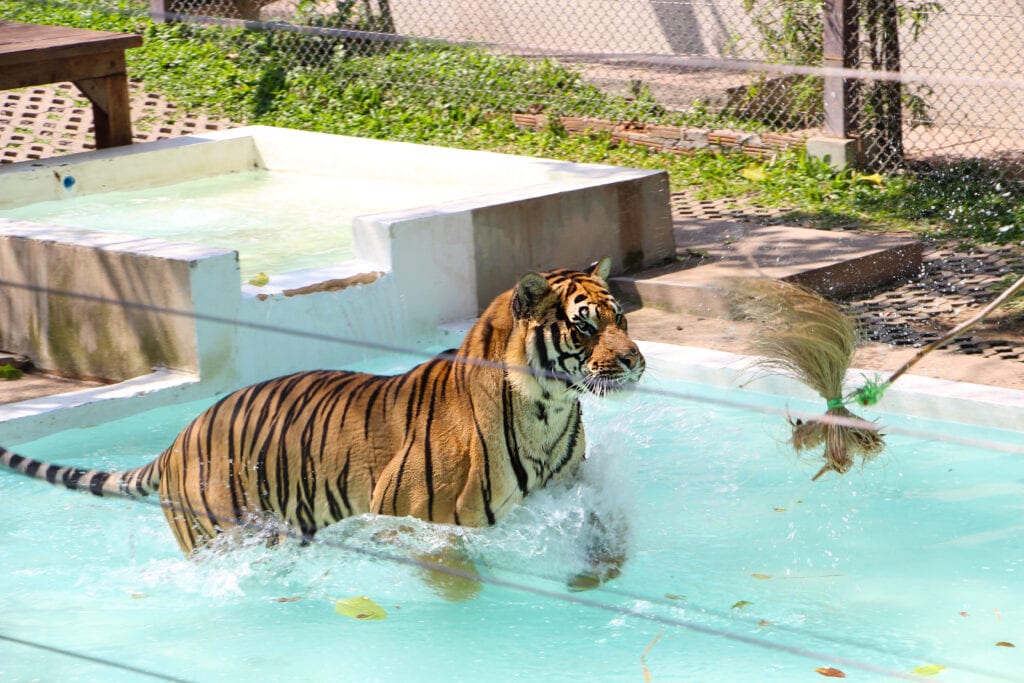
Peter – in the above discussion about tigers – mentioned that it has to be physically appropriate too — that they don’t want their animals to risk injury.
I found that so curious, because let’s take throwing a ball for your dog as an example. This is very enriching for a lot of dogs – but it can be overused and create issues. This is usually when done with the repeated use of a ball thrower for long periods of time. But, in moderation, with appropriate warm ups and cool downs – it’s absolutely appropriate enrichment.
So, by Peter’s words, this would be moderated — and zoos actually understand that already… It seems we have a lot to learn, huh?
Your Puppy & Management
Management, like the chainlink fence between a keeper and their big cat, limit what your puppy has access to in order to help them succeed. I mean, there is a big difference between your puppy chewing your shoes and Zara’s lion taking her hand off when she tried to check his teeth (which you’ll be happy to hear didn’t happen because of successful management) – but the principle is the same.

We can learn so much from modern animal handling. If zookeepers and trainers can train a tiger using compliant methods like positive reinforcement or reward-based training, is there any reason this shouldn’t work for your dog?
So, manage the chewing, manage what they have access to, manage their experiences with other dogs to ensure they’re positive, that over playing doesn’t happen, and manage their relationships with people of all sorts! The elderly, babies, children, and people in uniform. It’s all something that falls under appropriate management. And your puppy will thank you for it!
The Old Way Of Dog Training Your Puppy
This feels a little grotty to talk about. It’s kind of the elephant in the room, but it needs to be spoken about (like the Nellies in the zoo have to be cared for with positive reinforcement!).
The other way dogs tend to be taught is with something called “Alpha theory” or “Dominance theory”, sometimes rebranded as “Balanced” training. This is what one of the old TV-trainers used to preach, and is what a lot of people found their beliefs on, to this day. So, let’s discuss it really quickly.
Dominance doesn’t work with tigers. Tigers are too large, and too powerful. This can be the case for people and their puppy too. Some dogs are too large for people to dominate too, but there are those who believe in it, so fundamentally…
Is there a reason we need to physically dominate a dog? No… dominance or Alpha theory and it’s application to dogs was debunked more than a decade ago, but it still perpetuates under the idea that dogs need to know their place in the pack – but that isn’t the case.
Dogs don’t have a natural pack hierarchy – they are not wolves (a very common misconception! And even wolves don’t function in this manner…). Dogs live on a family structure in a home, and tend to drift amongst companions when you look at street dogs. They will defend things that they prize, value or cherish – but this won’t be the same for every dog. So, a dog’s natural ‘dominance’ for want of a better word is selective and dynamic and changes entirely based on situations.
This isn’t something the typical ‘pack’ structure dictates or explains.
Dominance theory perpetuates a lot with the larger breeds like German Shepherds, Cane Corsos, Belgian malinois and other breeds deemed ‘big, tough dogs’ – and is often said that you need to get them in line as a puppy…
But it’s really not needed. Your puppy doesn’t need it.
Like tigers, dogs, regardless of their size, do not need to be dominated.
ALI SMITH
Dominance does work for some – now this is always a happy accident. But it does not mean that it works overall. Just because elements of it (small elements at that!) were lucky enough to be correct, doesn’t mean the whole theory can be correctly applied from Tiger to Puppy.
I’m hoping that by discussing how these enormous predators can be trained in this manner, that it can dispell some of these myths. That it can unwind some of the tales that propagate. Like tigers, Dogs, regardless of their size, do not need to be dominated. Even the biggest of dogs will learn in a positive reinforcement-based way – if you apply it correctly – which comes back to your understanding.
So, let’s embrace positive reinforcement based techniques, and let’s approach your puppy differently. Let’s be the harbingers of change!
Respectfully.
Positively.
Ethically.
And with understanding.
It’s also good to now, puppy or older, it’s not too late if you’ve already started down a more dominant path. It’s never too late to start over with a dog – it’s something they’re fantastically forgiving about! It won’t confuse them, but instead it’ll delight them (and me!)
The Change Of Training Approach In Zoos
Zoos once used more forceful ways with their animals too, with Tigers and Lions – they are seeing a lot of change in modern times, which as I said earlier, I love to see. It fills me with joy to see these awesome animals that are in captivity for whatever reason begin to thrive there and to bond with humans in a safe, constructive and voluntary way.
Zara spoke about why this change was important in zoos too – and where it came from which was totally news to me!
“Traditionally large cats in zoos such as lions and tigers were tranquilised before any health checks or veterinary procedures could take place. This is done using a pole syringe or a dart gun loaded with anesthesia.
“The process of darting a large animal can be incredibly stressful to the animals and the human team responsible for its care. Furthermore, cortisol and anesthesia drugs can affect any subsequent blood test results that may be required.
“So the large animal keepers of terrestrial animals in zoos began to utilise positive reinforcement methods of animal training to teach cooperative care behaviours as was pioneered by the marine mammal training industry. You can’t anaesthetise a marine mammal very safely it incurs huge risk due to their specialised respiratory systems.
“The very same force free training methods that were used to achieve impressive show behaviours were used to teach cooperative care and voluntary veterinary procedures for things such as blood draws, health checks, swabs etc.
“The marine mammal trainers had achieved incredible results and it soon spread out to terrestrial animals within zoos. I began training sea lions in a zoo back in 2008. Truly amazed at how cooperative the sea lions were in their own care it made me think how other species are missing out on the benefits of training with positive reinforcement including dogs! “ – Zara
It makes total sense that these techniques originated with marine mammals for zoos and aquarium life, but it wasn’t something I had ever considered. I just know how effective it is with dogs! Speaking of, Zara now uses these techniques with her rescued German shepherd cross, Bob who she was pleased to tell me loves his training!
I also spoke to Peter about dominance and how it was doomed to fail in a zoo environment or with larger, more powerful animals, this is what he had to say.
“Trying to dominate a tiger is just ridiculous. You can’t.
“The whole point of dominating another is based on the communication the animals have between each other. We people believe that we can give the same kind of communication and therefore use dominance as valid strategy.
“We can’t even explain to each other how we feel let alone communicate in that sense with an animal.
“Using dominance comes down to the fact that the owner of the animal doesn’t have the skills to ethically take care of their animals. They use dominance practises which are based on punishment to make the animal behave the way they want.
“This is completely out of the picture and not in the best interest for the animal. Therefore we do not use this with the tigers.
“It is plain unethical and it’s proven not to work. Our goal is to work together in the animals own care. We can only achieve this by applying the correct strategies which are focused on what you would like the animal to do and reinforce accordingly without using pressure, tools such as e-collars etc.
“We use operant conditioning with an emphasis on positive reinforcement because everything we do should be a welfare benefit to our animals. Dominance does not have a place in there.” – Peter
It’s interesting isn’t it? Dominance is clearly entirely rejected by these two trainers – for Tigers & Lions, and yet people still use it with our wonderful dogs… It’s pretty sad.
So, Train Your Puppy Like A Tiger!
Or a Lion! Or a Sealion, or Killer whale. If it’s good enough for them, it’s good enough for your puppy. I implore you!
Give them the respect they deserve, the outlets they need, and the learning methods they (and you!) will thrive on. It’s a wonderful way to learn, it’s a wonderful way to be, and it produces better results.
What can I say more than that?
Zara had this to say about what being a zookeeper taught her about dog training, and gives us her best advice for training puppies.
“ My advice to new puppy parents is to avoid any training advice based on dominance theory or use of corrections. Puppies need to be taught that handling is safe and they can earn rewards such as a game of tug or a tasty treat.
“Every animal species can learn through reinforcement. Regardless of their size or position in the food chain. Even large breeds or aggressive dogs can and should be taught force-free. Punishment and corrections often actually exacerbate issues with fear and aggression.
“It is safer, less stressful and far more effective (not to mention more ethical) to train with force-free methods than to rely on equipment and corrections or dominance.
“Let’s face it if you were super anxious about a situation and someone pulled you about and told you to stop being anxious would it work? ” – Zara
And I love that. That right there is just magical with regard to anxiety. The one I always think of with regards to Zara’s last sentence is my own fear of spiders – I’m terrified of them! I love most creatures but spiders in my house do not belong.
If someone filled a room with spiders and made me sit in it, is that going to improve my fear? Or just make me so anxious I might burst into tears?
Probably the latter!
Similar can be said for fearful dogs. Though… not with spiders… But we’ll talk about states of forced helplessness another time.
Need help?
If you need help training your puppy like a tiger? Positive reinforcement and considerate, knowledgeable pet parenting is something I’m passionate about and something I cover and teach throughout out our year long puppy support programme, Pupdates!
Sign up for our pupdates and I’ll walk you through it, week by week to give you the best knowledge on all of these areas, so you can truly become your puppy’s best advocate.
Train your Puppy like a Tiger with
Rebarkable Pupdates!
holding your hand and paw through the first year

About Ali Smith
Puppy Development Expert
Ali is the founder of Rebarkable, is mum to Indie the German Shepherd cross & Shelby & Lucy the Coonhounds! She’s a passionate about giving our puppies the very best lives.
About Zara
About Zara (waiting on info)
About Peter Giljam.
Peter Giljam, a native of the Netherlands, has worked all over the world, from Sweden to Canada. He’s won the People’s Choice Award at the 2013 IMATA conference for his work with a deaf Killer Whale, and has worked with all kinds of animals including sea lions, birds of prey, lions, camels, elephants and tigers! He now runs Zoospensefull, a service which offers international animal training and behaviour consultancy for Zoos to help their animals.
You can learn more about Peter over at Zoospensfull .

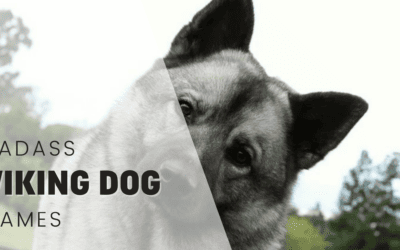

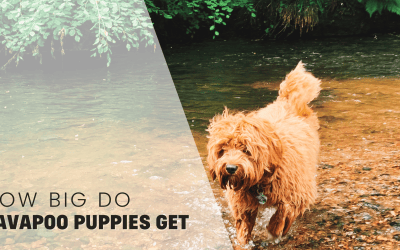
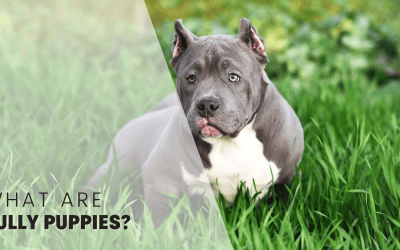

love this. I had no clue tigers were trained in this way. I’m going to make a big effort to try and be more positive with my puppy, thank you!
Thanks for this, it’s really inspired me to train my puppy the right way.
Sometimes I feel like our dog is hopeless when it comes to training because we rescued her at the age of 4. She is stubbon and set in her ways!
oh no! Let me know if i can help – stubbornness is often a human interpreted emotion associated with not having the correct motivator for her? Drop me an email if you want!
This is really interesting. I would have never thought about this either. I don’t have a dog, but I know a lot who do. I’m going to have to share this with them.
Thanks for sharing!
I grew up with dogs but I haven’t really put so much thought around training it. Thanks for sharing
Wow! This looks so interesting, plus you’ve given this very detail and so much information. Now, lets get to train our cute and adorable puppy.
Best of luck! Let me know if you need help
I enjoy watching tiger documentaries too! It never cross my mind to teach my dog like them.
This post is really informative, I have to make sure I reference back if I get a puppy.
These are really good tips. Puppy training can be tough, but it can be done with patience and love. Our little Bella was not difficult to train. The only thing we need to work on now is for her to learn to not escape. I can’t believe how she can even wiggle her body under the gate!
haha – sometimes it’s tough when they learn something! Boundary training can be really useful stuff!
Such an interesting way to train a puppy. Training puppies is never an easy thing.
It absolutely isn’t! and it’s often underestimated! That said, I’d rather the puppy than the tiger…
This was an interesting read. I’ve never heard of the idea of training your dog like a tiger. I definitely know that you should never train a dog using negative reinforcement, though.
Great to hear! It was an analogy to try and get people to re-think! Dominance is still (sadly) really prevalent in dog training
I definitely see the similarities in training any animal. I think most can be applied to dogs!
Yep! It’s all about understanding the motives behind what they do. once you get that? you can figure out what’s going on!
I love my dogs but I have always been a bad trainer. One of my dogs gets into a rage every time he sees a new dog and i wish I could change this behavior. Is it possible he is five years old?
Absolutely it is! So this sounds like Fear Reactivity to me, and actually punishing fear reinforces the fear? I’m not sure of the exact situation but I’d be happy to do a quick 15min call to discuss and consult as to how I may be able to assist?